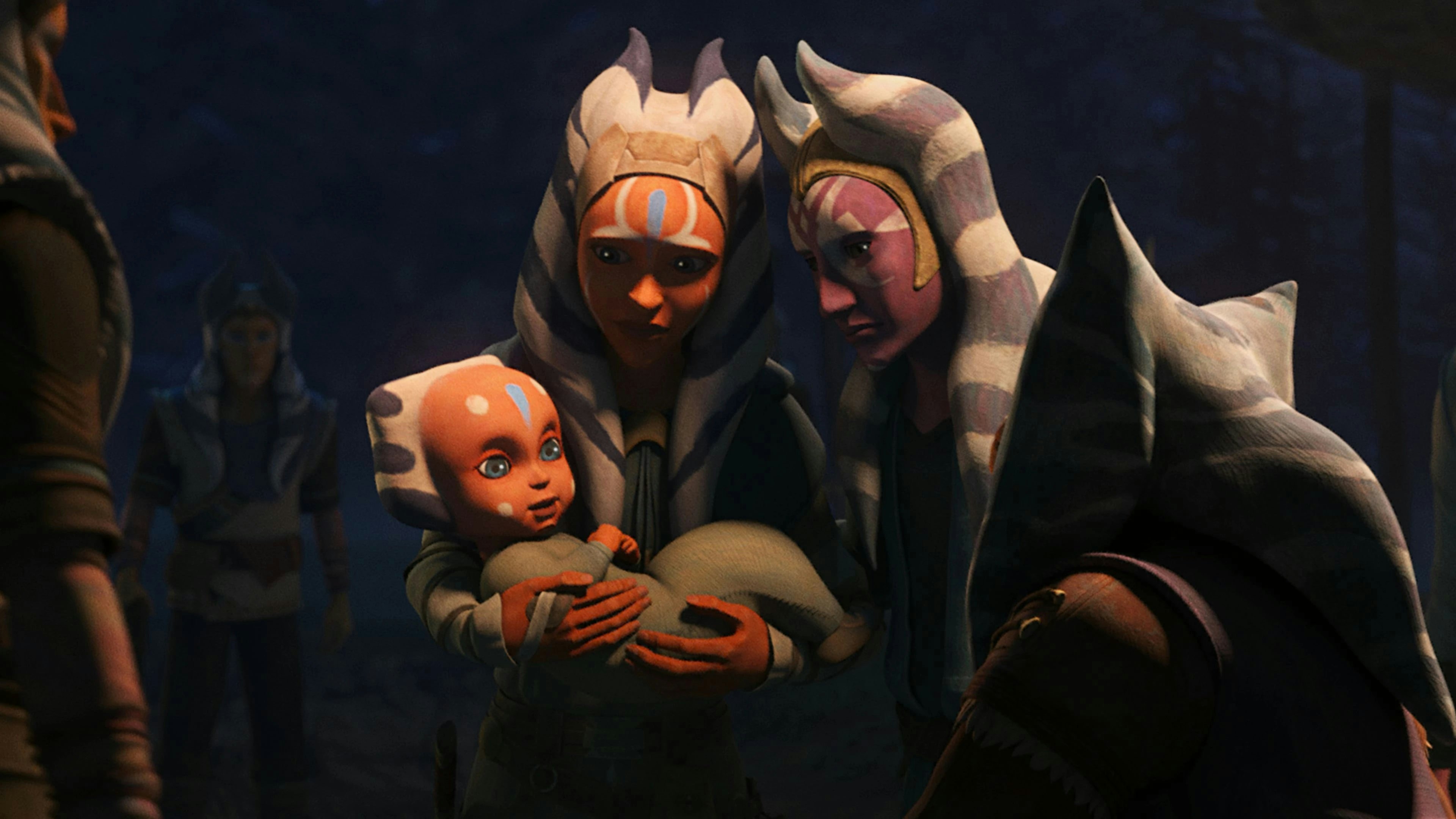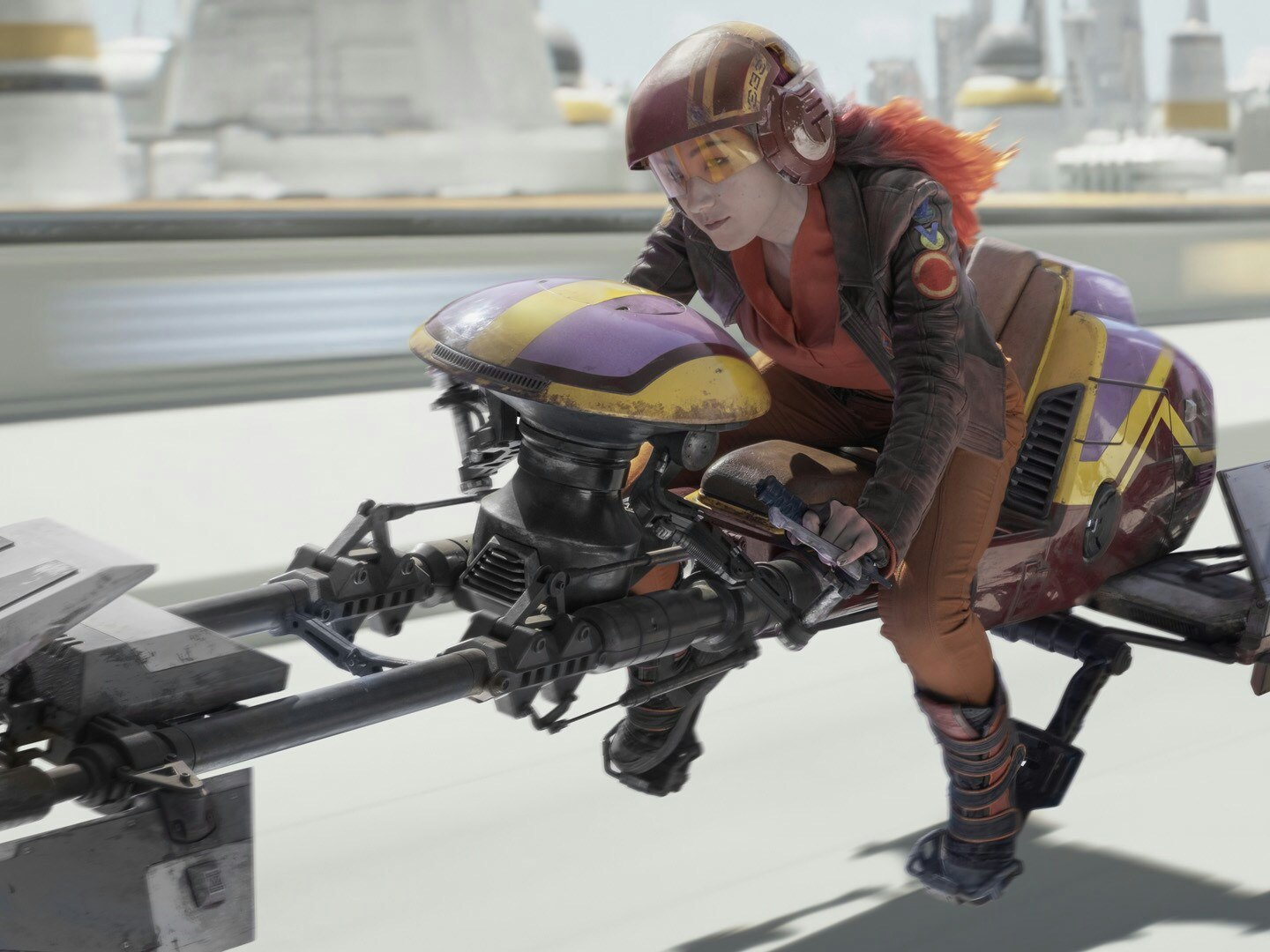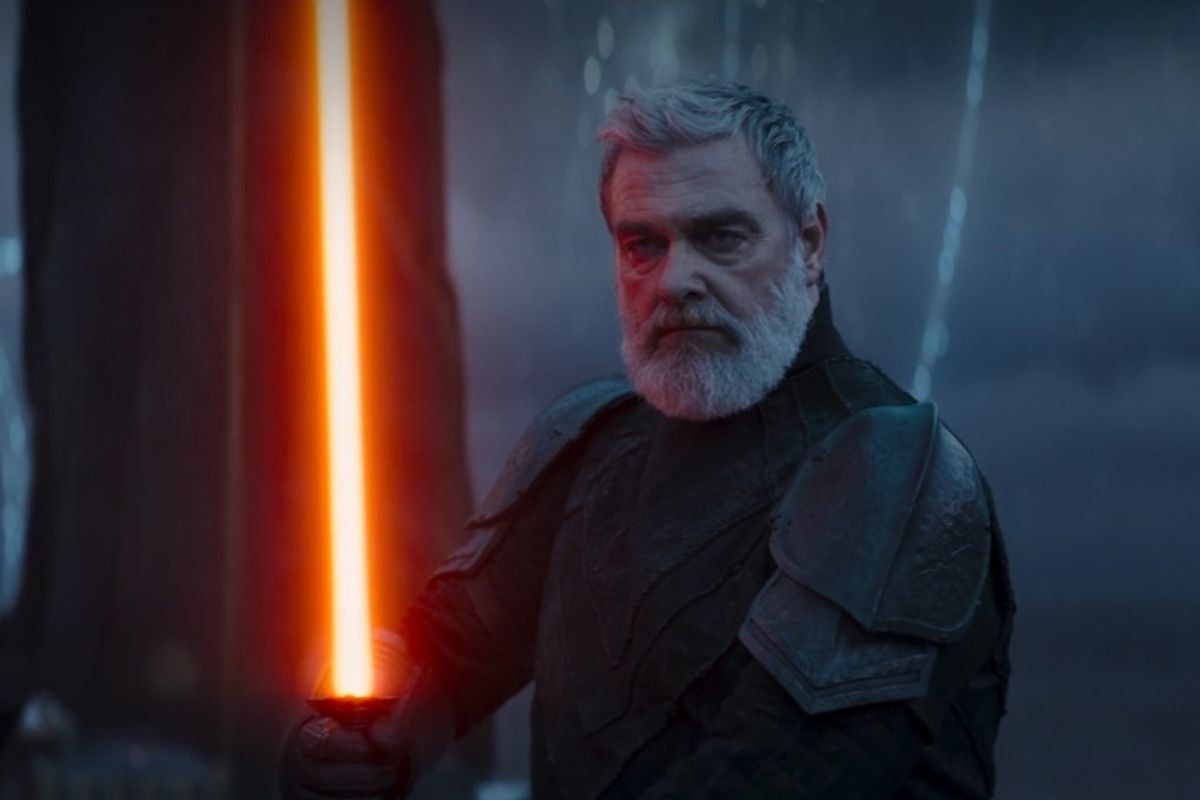
When composer Kevin Kiner got a job at Lucasfilm, his new bosses George Lucas and Dave Filoni started him off with a terrifying assignment: a rearrangement of John Williams’ main “Star Wars” theme.
“I told George I didn’t want to do it, without getting fired,” Kiner tells Inverse. “This is pretty much my first interaction with George Lucas, trying to argue about how I shouldn’t rearrange the Star Wars theme.”
Thankfully, Kiner got the keep his job and went on to define the music of the Star Wars animated universe, starting with Clone Wars and into Rebels, The Batch Batch, and Tales of the Jedi. Along the way, he had a chance to add his own leitmotif (a recurring theme often associated with a specific character; think Darth Vader and “The Imperial March”) to the Star Wars musical tapestry.
In Kiner’s case, that piece was the the haunting flute tune known as “Ahsoka’s Theme,” which made him the obvious choice when Ahsoka Tano finally got her own live-action project.
As Ahsoka has grown from an upstart Padawan to a wise Jedi master, so have Kiner’s children, Sean and Deana. Starting with Rebels, they’ve contributed to Kevin’s Star Wars compositions music. Now, they’re helping their father do something they’ve never done before — compose for big-budget Star Wars project.
While Ahsoka may feel like business as usual for the Kiners, it’s hard to deny the difference between animation and live-action.
“It got more polished, it got more refined,” Kevin Kiner says. “I think it became more of a group effort and more of a collaboration a little bit.”

Ahsoka’s Journey
“Ahsoka’s Theme” has evolved over the years to reflect her changing character.
When Lucasfilm produced the animated anthology Tales of the Jedi, it included an episode about the birth of Ahsoka. This provided a chance to redefine her theme.
“The Japanese influence was really big in Tales of the Jedi,” Kiner says. “So [Sean and Deana] came up with this ronin groove — this samurai, Japanese vibe — and then took the melody that I wrote and did variations of it over that.”
Japanese elements weren’t the only cultural pull for Ahsoka. Sean used a guzheng (a Chinese zither) for the more metaphysical elements of Ahsoka, like when she’s waking up in Episode 5 or when we see young Ahsoka for the first time later in that episode.
“It's got a beautiful running water kind of quality to its timbre,” Sean tells Inverse.
Deana also branched out her talents and learned to play the flute for the series.
“That hit on the Ahsoka title card, Deana is playing the ethnic flutes on those,” Kiner says. “There’s this one I got on the road to Hana and Maui, just a little dumb tourist flute, that wound up being the main sound on this one tune.”
For Deana, the flutes were essential to the tone of the score.
“We really like to incorporate that kind of organic feeling through music and having a really textured sound from something,” she says. “It’s really nice to reflect the nature in Star Wars, especially with all the animals and the magic of the Force, and use those organic sounds.”
“Star Wars is this alien analog for the familiar,” Sean says, “and so we’ll often take sounds that are familiar and make them a little alien or take alien weird sounds and make them feel kind of familiar.”
Space Punk

But while Ahsoka Episode 5 may have been all about the ethereal, Episode 1 was firmly the opposite. Our introduction to Sabine Wren as she’s speeding around Lothal is set to a fictional punk song called “Igyah Kah,” with vocals by Sarah Tudzin of the Illuminati Hotties. Ahsoka showrunner Dave Filoni had the idea for a classic motorcycle song, a tall task for a show about aliens.
“We were like, ‘Well, crap, we’re totally boned, so let’s just swing as hard as we can,’” Deana says. “Sabine is a punk. She is like a depressed 30-year-old punk who is alone. And so when we caught onto that or when we realized where she was at, it was really easy to just start steering into that.”
Tudzin’s punk voice screeches the lyrics for “Igyah Kah,” a mix of gibberish and Tagalog influences penned by Deana.
“We just wanted to make it feel like Sabine,” she says.
That part actually came courtesy of The Mandalorian composer Ludwig Göransson, who suggested they incorporate Sabine’s theme directly into the song.
Kiner recalls the conversation going like this: “He’s like, ‘Hey, you guys wrote this really good theme. Why aren’t you using it?’”
“It was a major nerd-out moment,” Sean adds.
But there’s still one question surrounding the “Igyah Kah” scene. Is that song something Sabine has on her space iPod, or is it just a very Sabine-inspired score? According to Kiner, the answer is... yes.
“It changes when she scoots under the ship and stuff like that, so it is scoring the scene,” he says, “and yet it’s kind of playing as diegetic rock music that she’s listening to.”
Studying the Classics

While this series allowed the Kiners to revisit their old Star Wars themes, there were also plenty of new characters that provided blank slates to work on. Chief among them is Baylan Skoll, a former Jedi knight turned mercenary played by the late Ray Stevenson. While the actor brings Shakespearean depth to the role, the Kiners’ score connects directly to a surprising Star Wars influence.
“For Baylan, we came up with the piano thing,” Kevin Kiner says. “Sean was really big into using Rachmaninoff, who wrote a lot for really heavy piano.”
This classical-inspired score not only reflects Baylan’s history-influenced character but also the techniques of John Williams, Star Wars’ most iconic composer.
“John may be the master; we go to the master’s master,” Kiner says. “Because his masters are like Stravinsky and Rachmaninoff and Beethoven or whoever.”
For the musically inclined Star Wars fans, there are plenty of Easter eggs to uncover within the soundtrack. “Anakin’s Theme” was threaded into the much-anticipated return of Hayden Christensen. The Clone Wars flashbacks are underscored with one of the most mournful songs in The Clone Wars soundtrack: “Burying the Dead.”
“This is how she grew up,” Deana says. “While she was young, visually she still had the memory of the moment of burying her dead soldiers in that, so it felt natural to put it in there.”
Esteemed Company
For the Kiners, it can still sometimes feel like it did when Kevin first started in Star Wars and was asked to mess with the classic John Williams score.
“We’re just Star Wars fans at the end of the day,” Sean says.
“Our job as composers is to be reflecting what’s on screen,” Deana adds. “I think that’s what every composer for Star Wars has been doing. From what Ludwig has done to help the Western feeling be evoked, to Nicholas Britell doing Andor, it really makes you understand where you should be emotionally.”
After listening to his kids gush over the opportunities they’ve had, Kevin Kiner takes a moment to reflect as well. Then he chimes in like a proud, corny dad only could.
“We just named Ludwig Göransson, Nicholas Britell, John Williams, and us. To be in that conversation is a great honor. It’s the greatest honor you could absolutely ever imagine, so thank you. What a gift.”







